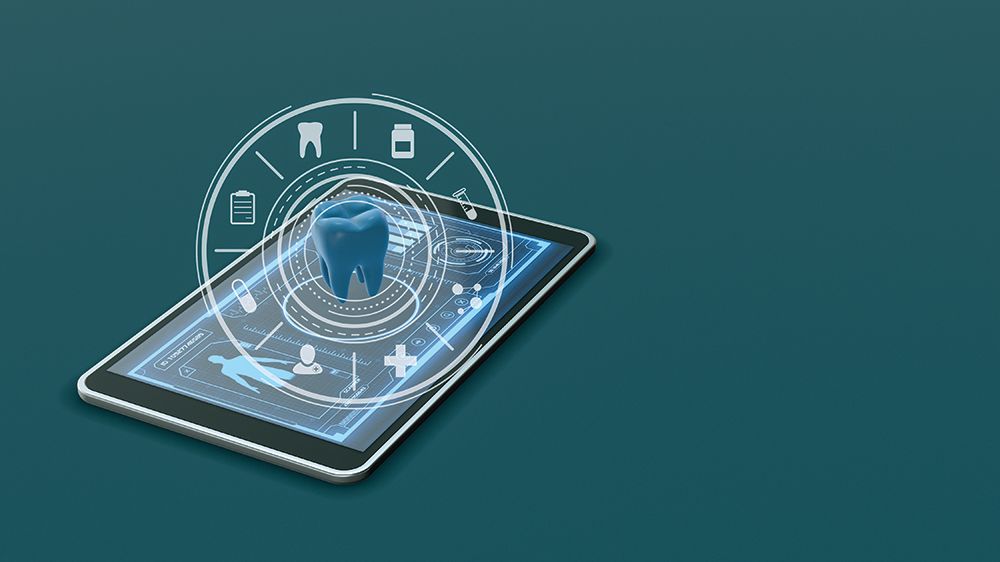5 Tech Tools That Will Set Your Practice Apart
From live chat to same-day dentistry, you can exceed patient expectations with these tech-forward strategies.
LUCADP / STOCK.ADOBE.COM

We live in a world focused on instant gratification, and convenience reigns supreme. Even amid a global pandemic, when it seemed as though the entire world was shutting down, modern innovations made it possible for life to continue, albeit in unexpected ways.
Business meetings, schools, and social gatherings shifted to video conferencing from the comfort of home. Food and groceries were delivered contact free at the click of a button. Teledentistry helped practitioners see patients without having to be in the office. And many of these COVID-19 pandemic–era services that were necessary during lockdown are so incredibly convenient that they won’t be going away anytime soon, even as the world reopens.
Patients have grown to not just want convenience but also to expect it. Fortunately for practitioners, recent advancements in technology are making it easier to attract, appoint, and treat patients who are busier than ever.
1.Live Chat
Adding a live chat feature to your website helps prospective patients connect with your practice 24/7. Since patients often research dentists online after hours or on the weekends, adding a live chat to the website enables them to get answers to their questions immediately, without having to wait 12 hours or more to make a phone call. A chat bot, such as services offered by Birdeye, PBHS, and WEO Media, can answer basic questions automatically, and a chat representative can field patient inquiries and gather necessary information outside of regular practice hours so that your front desk staff can follow up the next business day.
2.Online Appointing
In a recent study by Accenture, 68% of patients stated they are more likely to choose a practice that offers the option to book, change, and cancel appointments online.1 And it’s not just millennials and Gen Xers who are driving this trend; 33% of baby boomers said they are willing to switch providers for the ability to book online, which was up from 18% in 2019.2 Not only does online scheduling streamline the booking process for patients, it also alleviates some of the front desk burden and helps eliminate the frustration (for both staff and patients) of missed calls and unanswered voicemails.
3.Real-time Texting
Prior to the pandemic, most patients preferred calling to make a dental appointment, although Gen Xers and millennials had been showing less interest in doing so. And patients’ interest in picking up the phone to call their providers dropped even more during the pandemic.3 HIPAA-compliant text messaging capabilities aren’t new, but this feature is becoming the preferred method of communication among dental patients. An added bonus for dentists: No-shows have been proven to be reduced by 40% with automated text reminders.4
4.Patient Review Automation
Dentists may dread dealing with online reviews, but patients love to read them. They are not only looking at what others say about dentists online, but they also take the number of reviews a dentist has into account. It may feel uncomfortable to ask patients to leave an online testimonial, but there are several innovative platforms that send automatic email and/or text reminders to patients to share their experiences online. It’s seamless for the patient, who simply clicks on a link to be taken to a site such as Google, Yelp, or Healthgrades, and it’s an effective way to build 5-star profiles.
5.Same-Day Dentistry
The ultimate convenience is a same-day dental visit. It can be difficult enough to coordinate a patient’s schedule to get an appointment booked in the first place, let alone making multiple appointments. Although follow-up appointments are unavoidable in some scenarios, tech-forward tools such as CEREC, dental lasers, and 3D printers make it easy to offer single-visit procedures. These can help boost practice production by keeping more services in-house.
References
1. Today’s consumers reveal the future of healthcare Accenture. Accessed July 12, 2021. https://www.accenture.com/us-en/insights/health/todays-consumers-reveal-future-healthcare
2. 2019 Patient Access Journey Report. Kyruus. Accessed July 12, 2021. https://www.kyruus.com/hubfs/Whitepapers/Reports/Kyruus%20Patient%20Access%20Report_2019_vfinal.pdf
3. Chatham L. Two-way text messaging can solve many patient engagement challenges. Orthodontic Practice US. December 7, 2020. Accessed July 12, 2021. https://orthopracticeus.com/ce-articles/two-way-text-messaging-can-solve-many-patient-engagement-challenges/
4. Guta, M. Thinking about SMS appointment reminders? Here are 8 reasons your business needs them. Small Business Trends. May 17, 2019. Accessed July 12, 2021. https://smallbiztrends.com/2019/05/sms-appointment-reminders.html

How Dentists Can Help Patients Navigate Unforeseen Dental Care
December 12th 2024Practices must equip patients with treatment information and discuss potential financing options before unexpected dental treatments become too big of an obstacle and to help them avoid the risk of more costly and invasive procedures in the future.